This post may contain affiliate links. Please see our disclosure policy.
This asian marinated pork tenderloin is a high-protein dinner that’s both nourishing and full of flavor. The simple Asian marinade made with coconut aminos, garlic, and maple syrup gives the pork a perfect balance of savory and slightly sweet, while keeping it naturally gluten-free and refined-sugar-free. Each bite is tender, juicy, and packed with lean protein to keep you satisfied and energized! With just 10 minutes of prep and a quick sear-and-bake method, you’ll have a wholesome, nutrient-dense meal on the table that tastes just as good as it is good for you. I’d call that a winner!
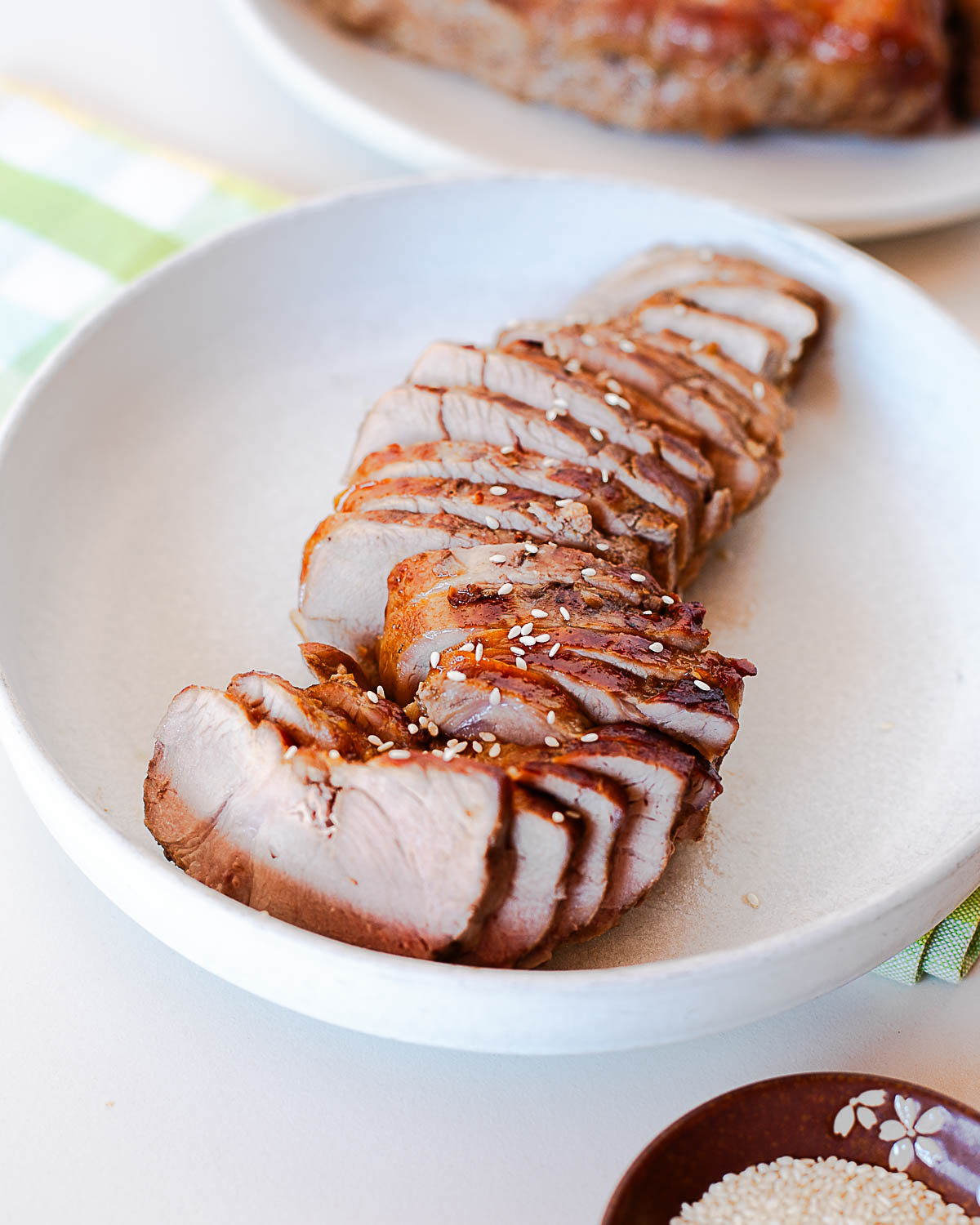
Table of Contents
- Asian Marinated Pork Tenderloin with Coconut Aminos
- Why you’ll love this easy recipe
- Simple ingredients you’ll need for this pork marinade
- Make the asian marinade
- How to cook asian marinated pork tenderloin
- Watch me make this easy meal
- Pro tips for the best flavor
- Flavor variations
- Serving Ideas
- Storage & Meal Prep
- Substitutions, optional variations & dietary adjustments
- More protein-packed recipes you’ll love
- Asian Marinated Pork Tenderloin with Coconut Aminos Recipe
Asian Marinated Pork Tenderloin with Coconut Aminos
There’s something about this Asian marinated pork tenderloin that always brings everyone to the table with smiles. The smell alone – that mix of garlic, ginger, and maple caramelizing in the pan – makes everyone hungry as dinner cooks.
I love how easy it is to pull together, even on our busiest nights. The marinade takes just a few minutes to whisk up in the morning, and by dinnertime, all that flavor has soaked right in. A quick sear, a short bake, and suddenly there’s a perfectly tender, juicy dinner that tastes like it took hours.
It’s also one of those meals that checks every box – high in protein, naturally gluten-free, and totally satisfying for the whole family. Whether I serve it with rice and veggies or slice it up for leftovers in lunch bowls, it’s always a hit!
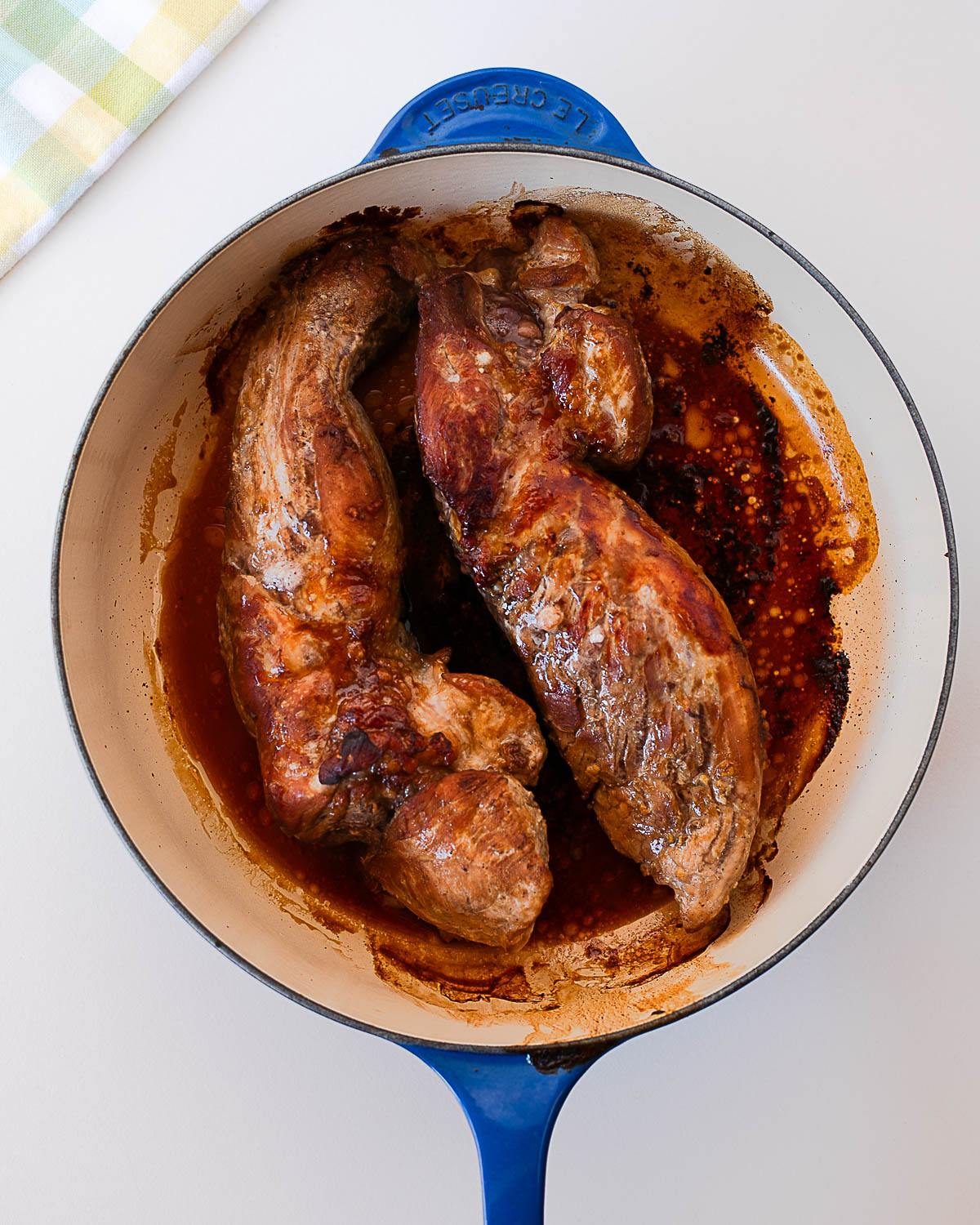
Why you’ll love this easy recipe
- Packed with flavor – The Asian-inspired marinade combines coconut aminos, garlic, and maple syrup for a perfect balance of salty, sweet, and savory. With just a few simple ingredients, you get big flavor without a lot of effort.
- Easy to cook – Searing first locks in the juices, and finishing in the oven ensures even cooking. Using a digital meat thermometer guarantees that perfect 145°F internal temperature for the most tender pork tenderloin.
- Perfect for meal prep and family dinners – This is the kind of flavorful weeknight dinner everyone loves – and the leftovers reheat beautifully for rice bowls or wraps. It’s a healthy, high-protein option that fits easily into our busy schedules.

Simple ingredients you’ll need for this pork marinade
Scroll down to view the recipe card below for the full ingredients list, nutrition facts, and step-by-step instructions.
- Pork tenderloins – Lean and tender, pork tenderloin cooks quickly while staying juicy. You can also use this same Asian marinade for pork chops or even a pork loin roast.
- Coconut aminos – A soy-free alternative to soy sauce that adds salty-sweet umami depth.
- Garlic cloves – Fresh garlic builds the base flavor of this marinade.
- Rice vinegar – A touch of acid that helps tenderize the meat and balance the sweetness.
- Maple syrup – Adds caramelized edges and natural sweetness – you can swap brown sugar or honey if you prefer.
- Ground ginger – A classic Asian spice powder that brings warmth and depth.
- Sea salt + black pepper
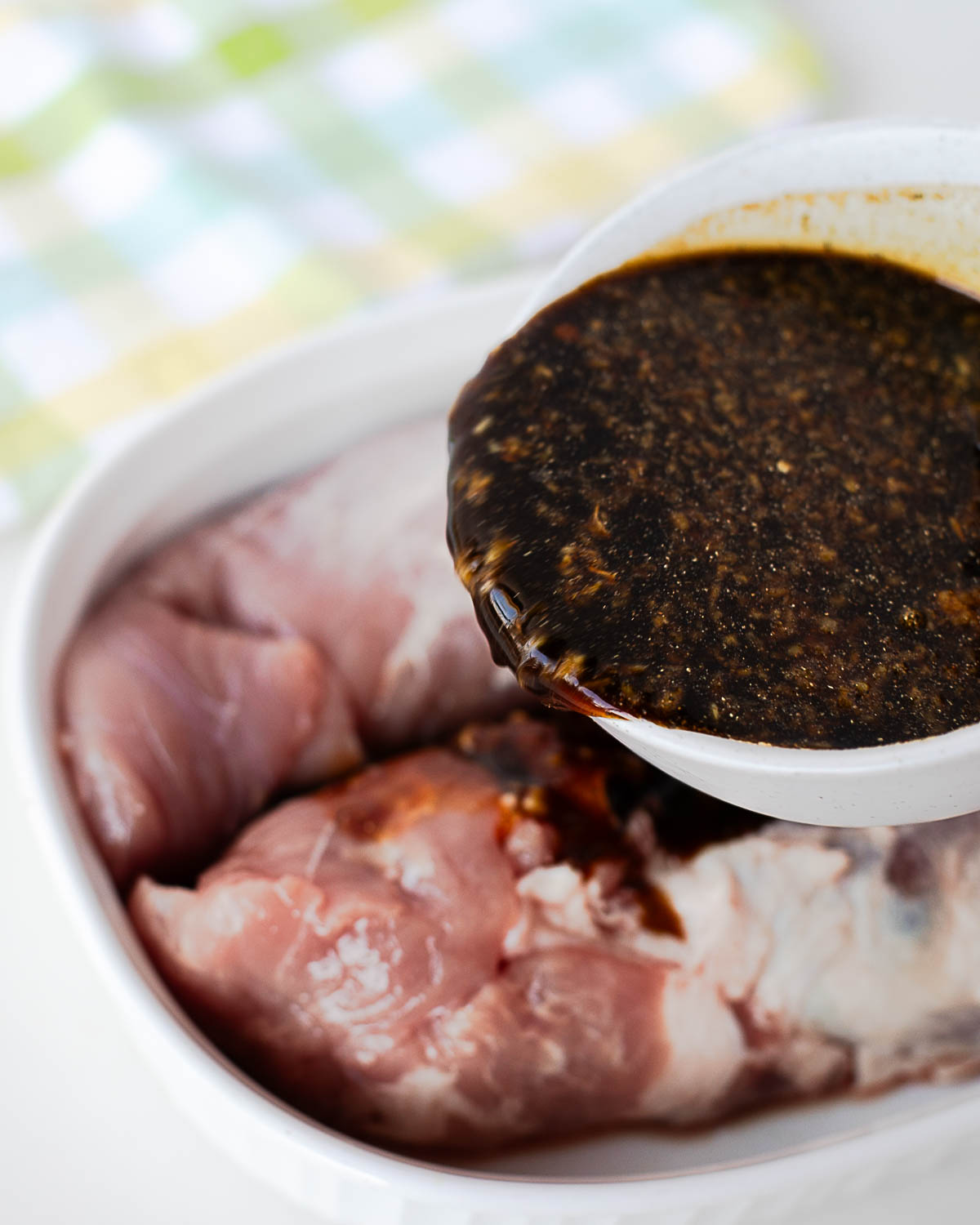
Make the asian marinade
In a medium bowl or small saucepan, whisk together coconut aminos, garlic, rice vinegar, maple syrup, ginger, sesame oil (if using), salt, and pepper.
Pour into a resealable bag or shallow baking dish and add the pork tenderloins. Coat well, then refrigerate for at least 30 minutes – or up to 8–24 hours for the best flavor.
Tip: For food safety, discard the leftover marinade once the pork has been removed, or simmer it for 2 minutes in a small saucepan to use as a glaze.
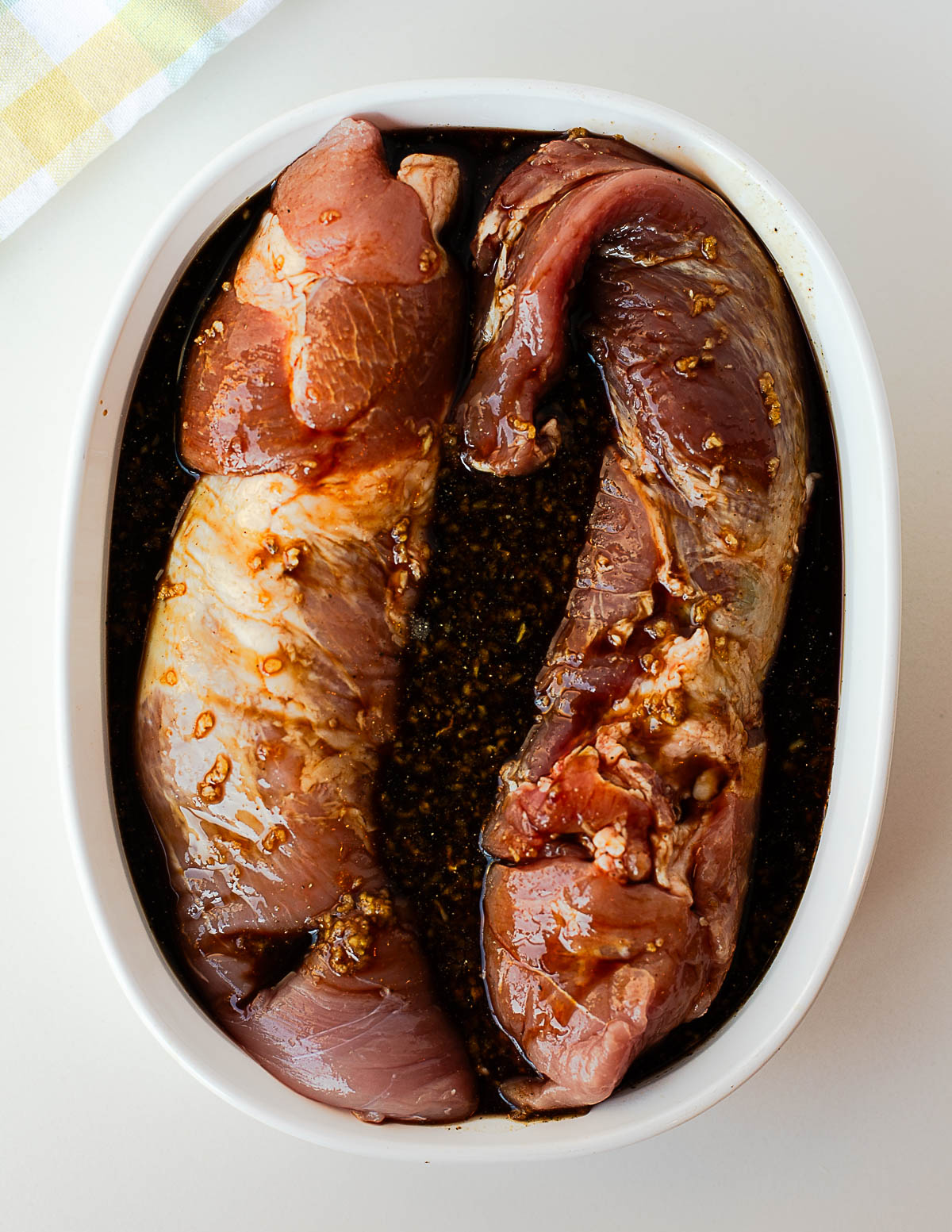
How to cook asian marinated pork tenderloin
Step 1: Preheat your oven to 400 degrees F. Heat a large oven-safe skillet over medium-high heat and sear each tenderloin for 4–6 minutes per side until browned.

Step 2: Transfer the skillet (or move pork to a foil-lined baking dish) and roast for 20–25 minutes, depending on thickness. Use a digital meat thermometer to ensure the center reaches 145 degrees F – the ideal temperature for juicy Asian pork tenderloin.
Step 3: Let it rest on a cutting board under loose foil for 5–10 minutes to seal in those flavorful juices. Slice thinly with a sharp knife.
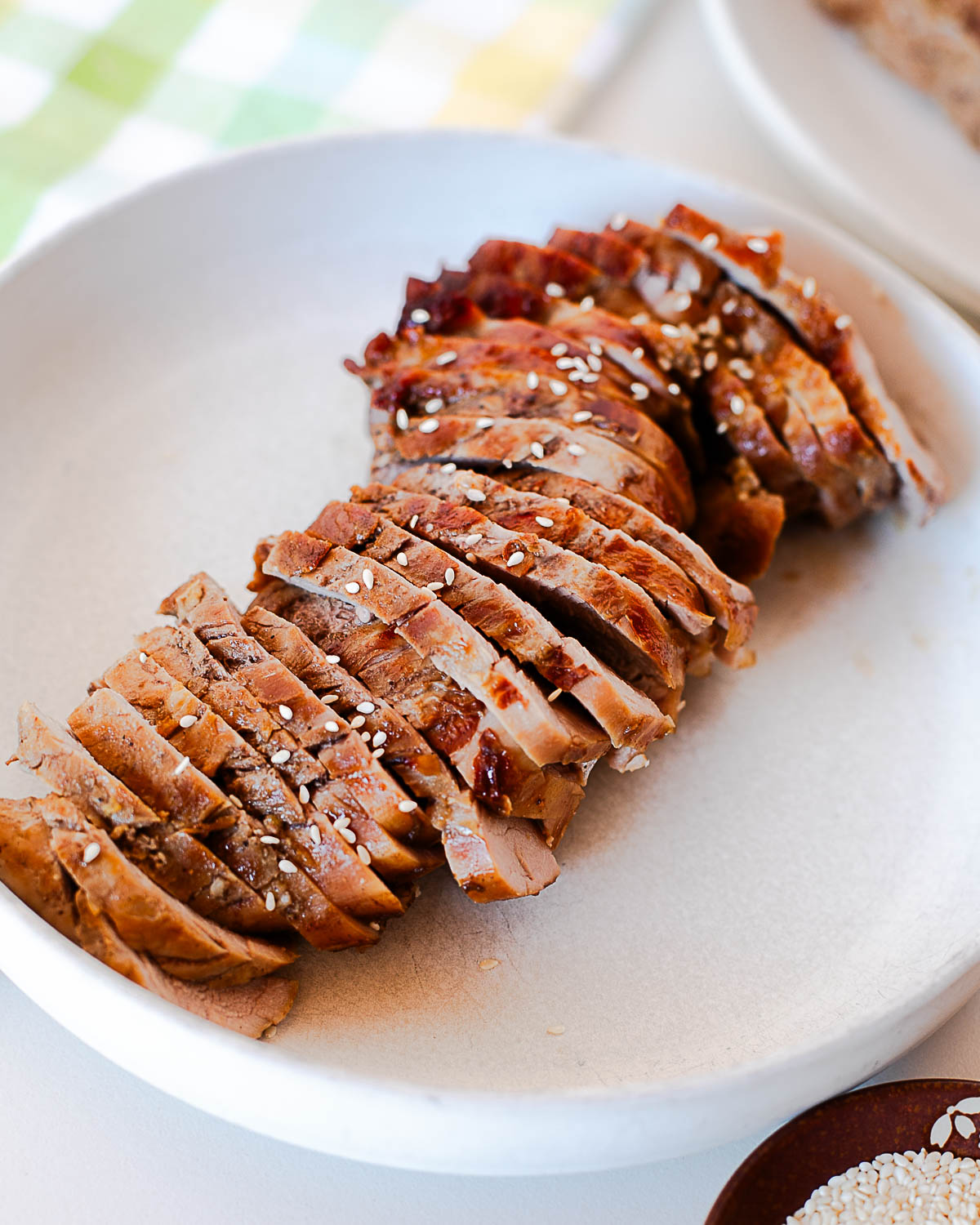
Watch me make this easy meal
The full how to video can be watched below, or on my YouTube channel!
Pro tips for the best flavor
- Don’t skip marinating overnight. It deepens the flavor and makes the pork even more tender.
- Trim the silver skin. If your pork has a thin silver membrane, remove it before marinating for even cooking.
- Use a thermometer – not guesswork. Perfectly cooked pork should be slightly pink in the center and incredibly juicy.
- Double the marinade. Reserve half (before adding raw meat) to drizzle over the finished dish.
Flavor variations
- Spicy kick: Add a drizzle of chili oil or a pinch of red pepper flakes to the marinade for a little heat. It balances beautifully with the maple syrup and gives the pork a subtle, flavorful bite.
- Citrusy twist: Stir in 1–2 tablespoons of fresh lime juice or orange juice to brighten the flavor and add a hint of tang. It’s especially delicious when served with jasmine rice and a squeeze of extra lime on top.
- Sesame and scallion finish: Before serving, sprinkle sliced green onions and toasted sesame seeds over the pork. This simple garnish adds texture, color, and that classic nutty flavor you love in Asian-inspired recipes.
- Sweet and sticky glaze: Reserve a few tablespoons of the marinade ingredients (before adding raw pork) and simmer them in a small saucepan until thickened. Brush it over the cooked pork for a glossy finish and even more flavor.
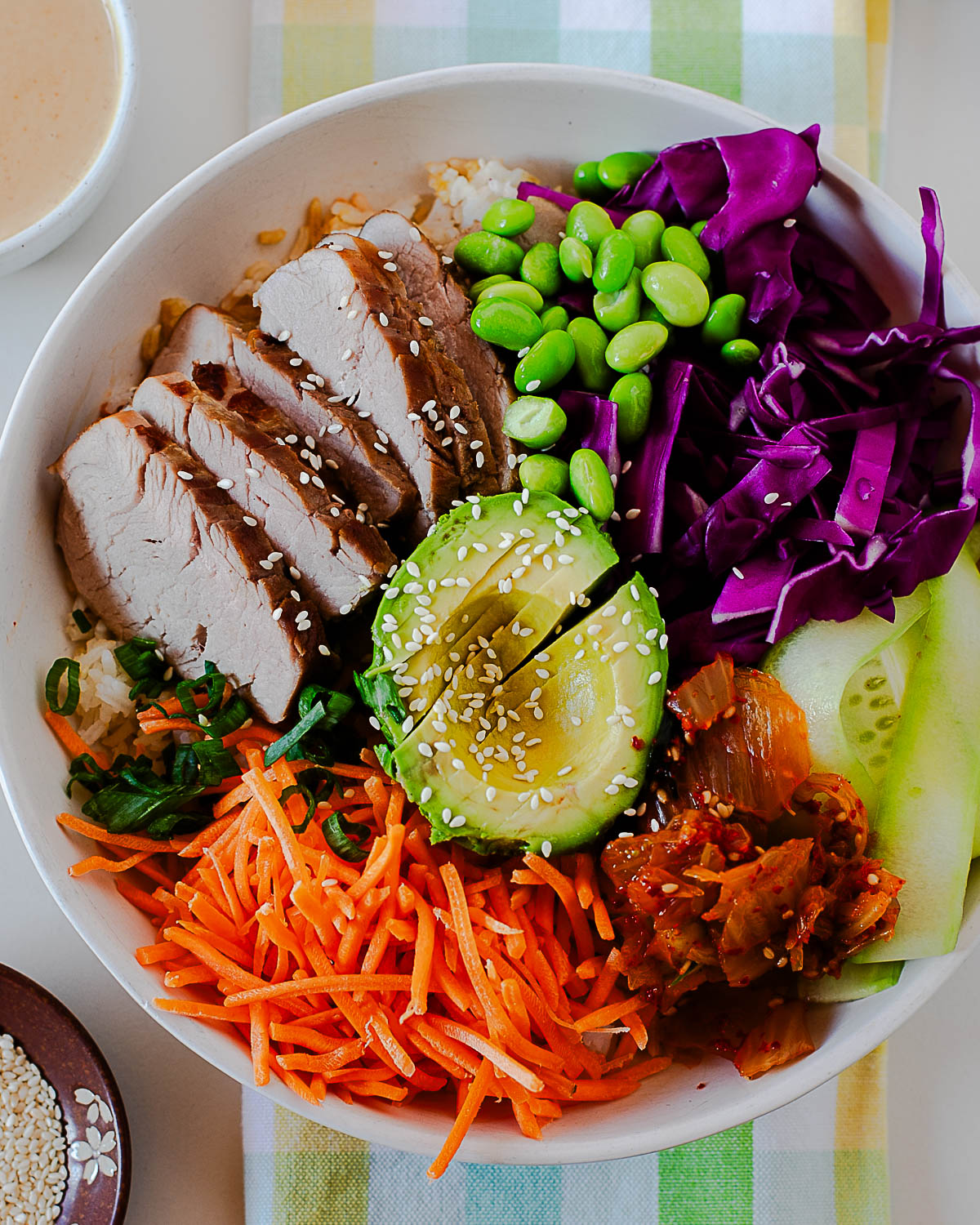
Serving Ideas
Serve your marinated pork tenderloin sliced over white rice or quinoa with a side of roasted Brussels sprouts or an Asian-style slaw. Sprinkle with chopped green onions or sesame seeds for extra texture and color.
It also makes amazing leftovers – add slices to kimchi rice bowls, wraps, or salads for a high-protein lunch your whole family will love.
Storage & Meal Prep
Store any leftover pork tenderloin in an airtight container in the fridge for up to 4 days. The flavors actually get even better as they sit, making it perfect for easy lunches or quick protein additions to bowls and salads.
When you’re ready to enjoy it again, reheat gently over medium heat in a skillet with a splash of water or coconut aminos to keep it tender and moist. You can also warm slices in the air fryer for 3-4 minutes – just enough to bring back that caramelized exterior without drying out the pork.
For longer storage, freeze individual portions for up to 4 months, then thaw overnight in the fridge and reheat the same way for a flavorful, ready-to-go meal anytime.
Substitutions, optional variations & dietary adjustments
Below you’ll find a list of substitutions that will work well in this asian pork tenderloin recipe.
If you try something different out, please leave a comment below letting us all know how it turned out!
Pork Tenderloin – This easy marinade works just as well for other cuts of pork or even boneless skinless chicken thighs. Just adjust the cook times to reach the proper internal temperature for whichever protein you use.
Coconut aminos – If you don’t have coconut aminos on hand, use low-sodium soy sauce or tamari. It will add a saltier, slightly deeper flavor – just reduce the added salt in the recipe slightly to balance it out.
Ground ginger – For a bolder, more aromatic flavor, swap the ground ginger for 1 tablespoon freshly grated ginger. It brightens the marinade and gives that authentic Asian twist.
Brown sugar or honey for maple syrup – You can swap the maple syrup for honey or brown sugar – they all work beautifully to sweeten and caramelize the pork. Brown sugar creates a richer glaze, while honey gives a lighter sweetness – either will help the pork develop those golden, caramelized edges.
Rice vinegar – Rice wine vinegar or lime juice will work here as well, and add the tangy acidity needed to tenderize the meat and balance the savory flavors. Lime juice also gives a slightly fresher, citrusy note that pairs perfectly with the marinade.
Add sesame oil for depth – A drizzle of toasted sesame oil brings a nutty aroma that enhances the Asian marinade. It’s optional, but if you have it, use it — the flavor payoff is worth it.
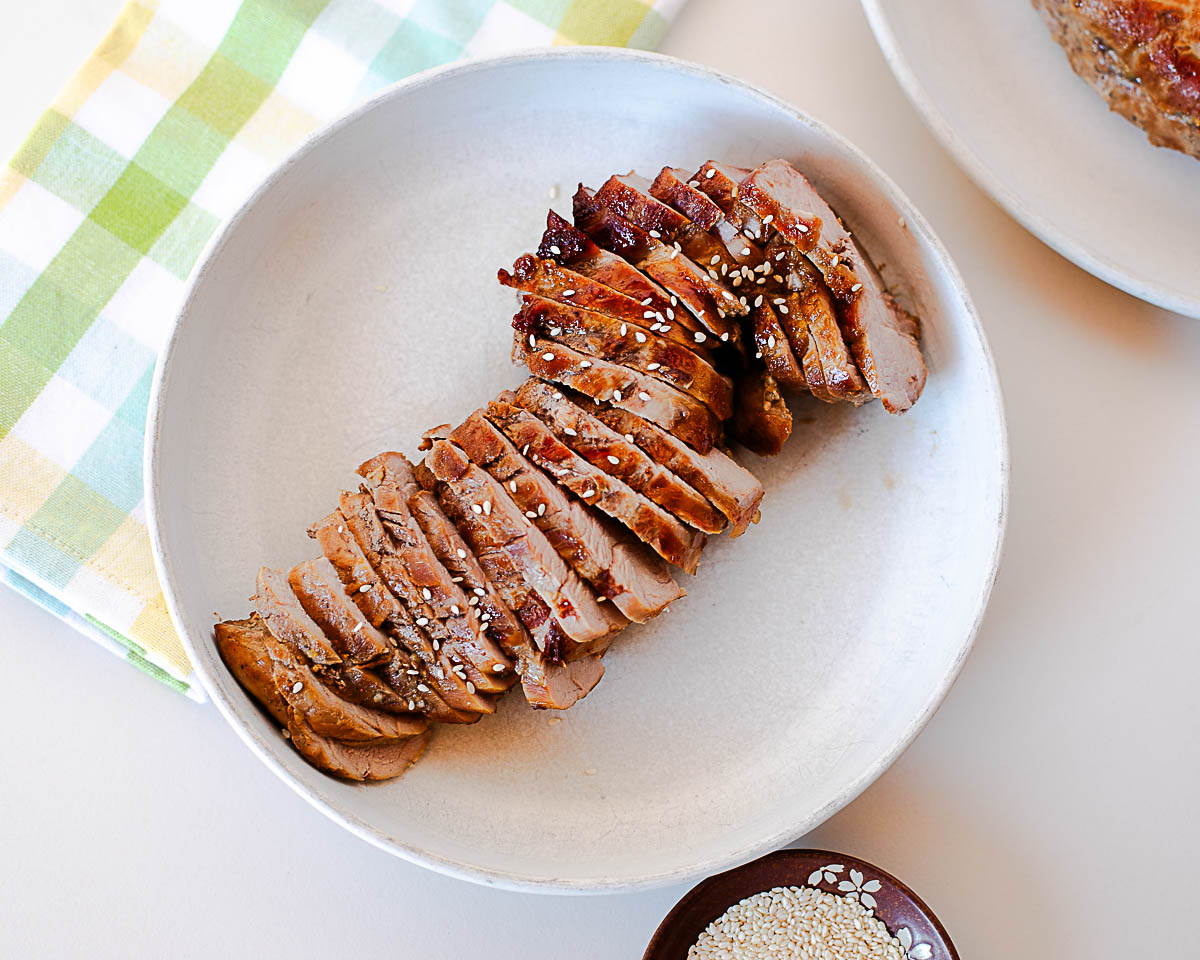
More protein-packed recipes you’ll love
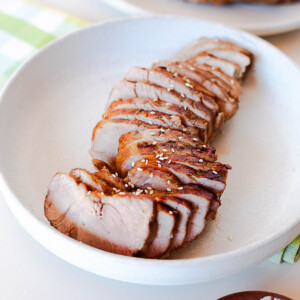
Asian Marinated Pork Tenderloin with Coconut Aminos
Ingredients
- 3 lb pork tenderloin
- 1 cup coconut aminos
- 4 garlic cloves, minced
- 2 tbsp rice vinegar
- 2 tbsp maple syrup
- 1 tsp ground ginger
- 1/2 tsp sea salt
- 1/2 tsp black pepper
Instructions
- In a medium bowl or small saucepan, whisk together coconut aminos, garlic, rice vinegar, maple syrup, ginger, sesame oil (if using), salt, and pepper.
- Pour into a resealable bag or shallow baking dish and add the pork tenderloins. Coat well, then refrigerate for at least 30 minutes – or up to 8–24 hours for the best flavor.
- Preheat your oven to 400 degrees F. Heat a large oven-safe skillet over medium-high heat and sear each tenderloin for 4–6 minutes per side until browned.
- Transfer the skillet (or move pork to a foil-lined baking dish) and roast for 20–25 minutes, depending on thickness. Use a digital meat thermometer to ensure the center reaches 145 degrees F – the ideal temperature for juicy Asian pork tenderloin.
- Let it rest on a cutting board under loose foil for 5–10 minutes to seal in those flavorful juices. Slice thinly with a sharp knife.
Nutrition
Nutrition information is automatically calculated, so should only be used as an approximation.
If you try this asian pork marinade recipe, I’d love it if you left a star rating and comment below letting me know how it turned out!
XO
Heather









